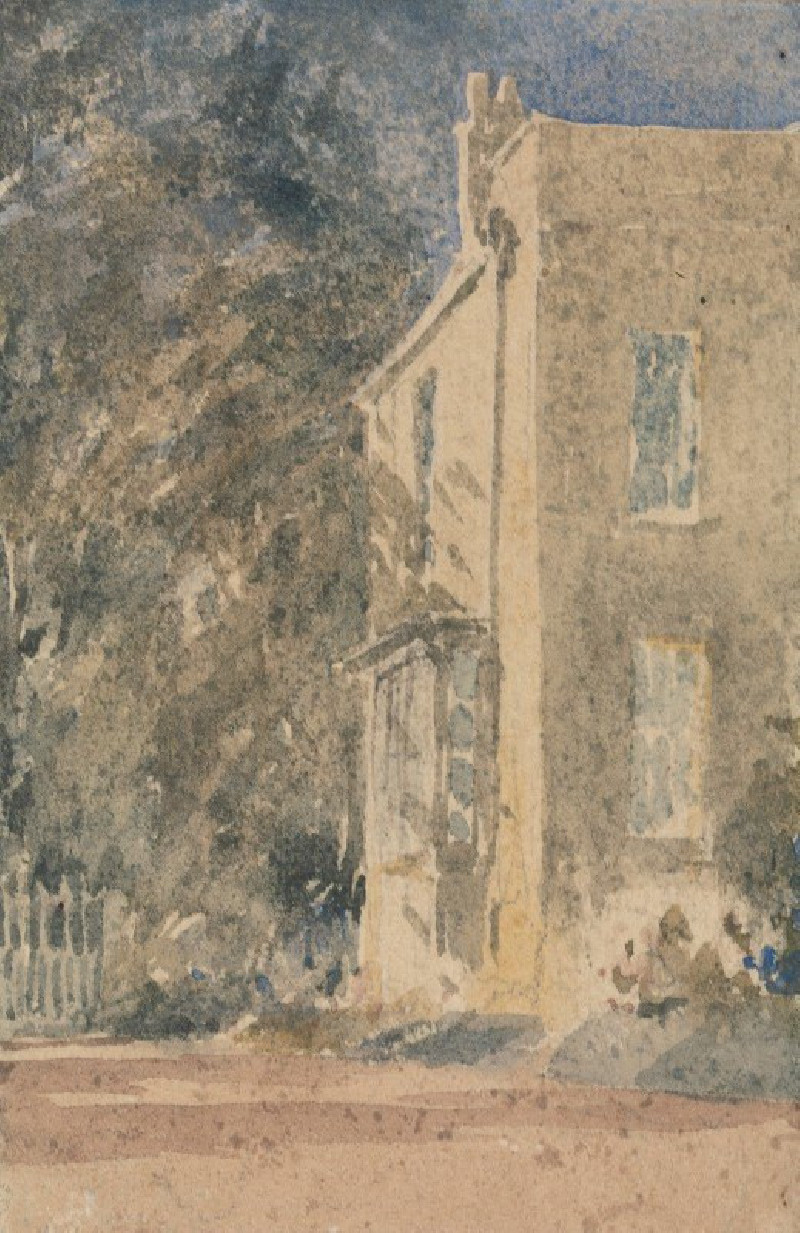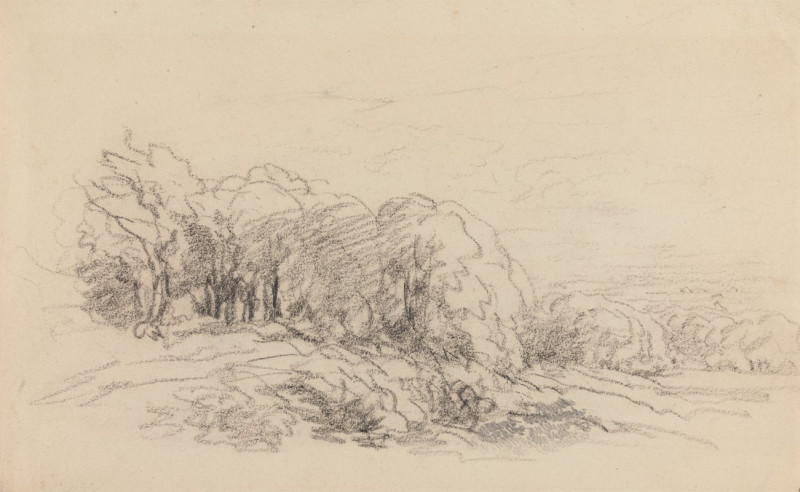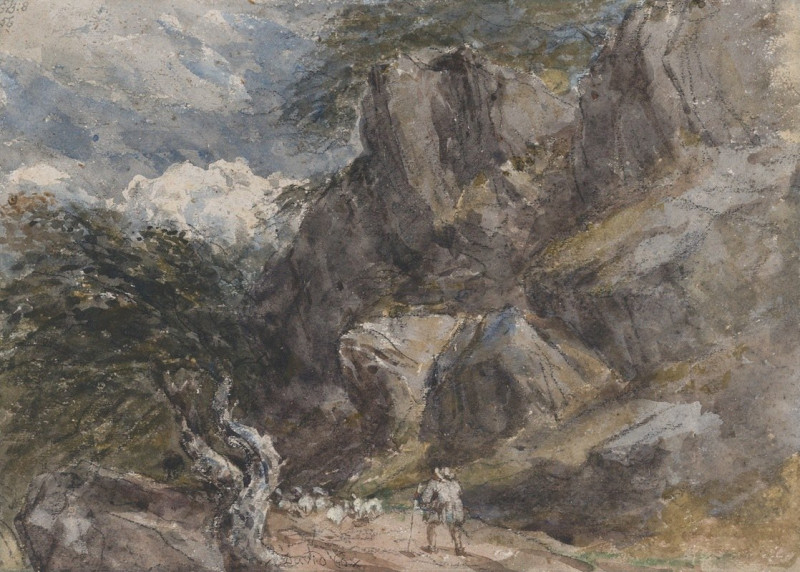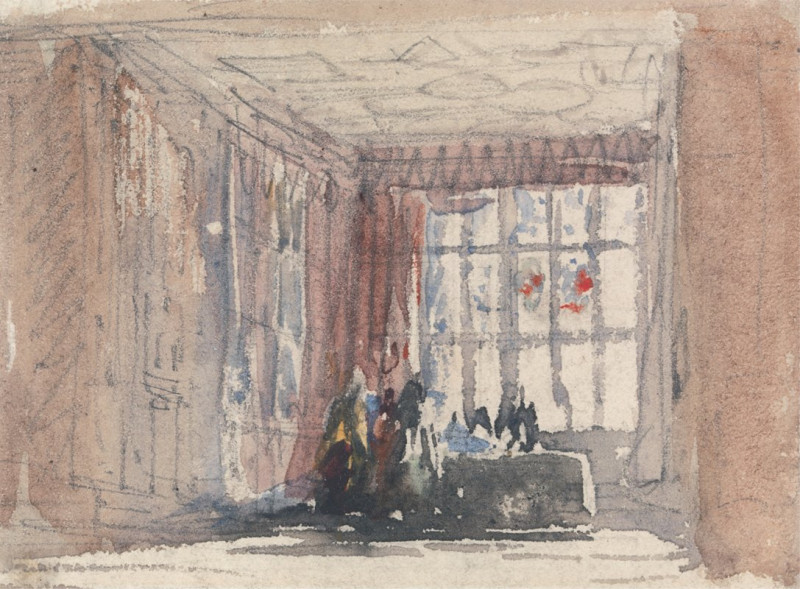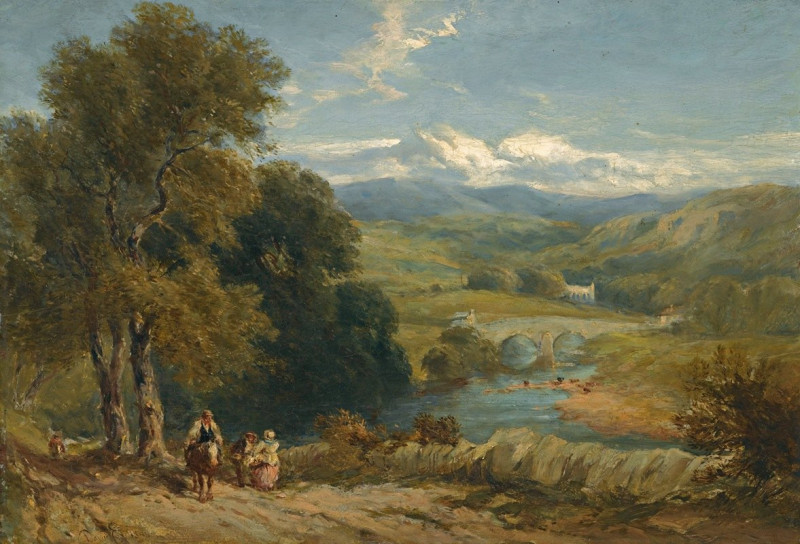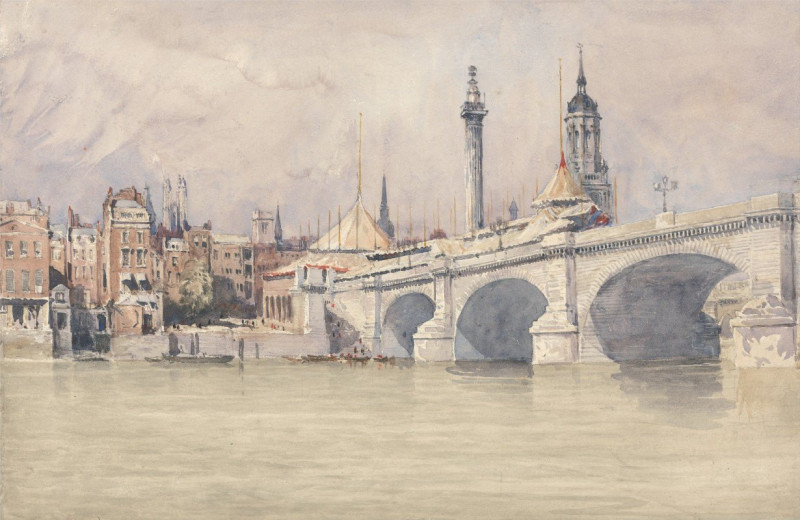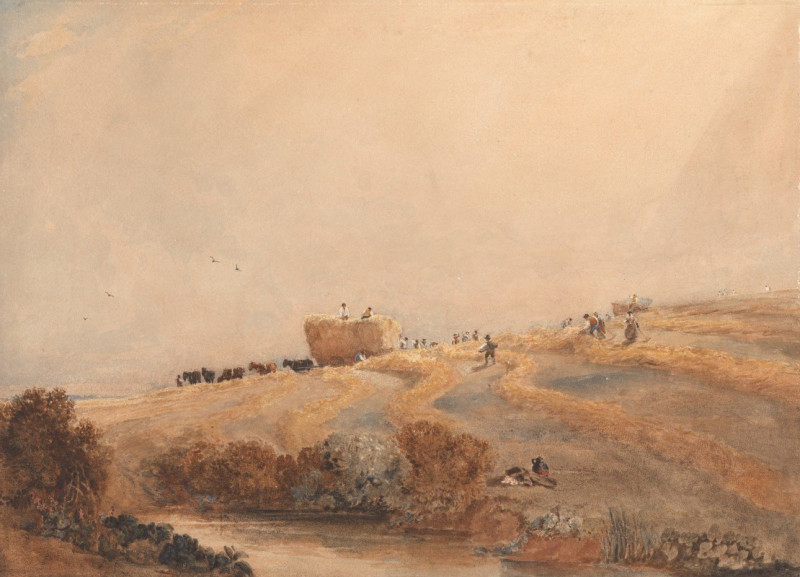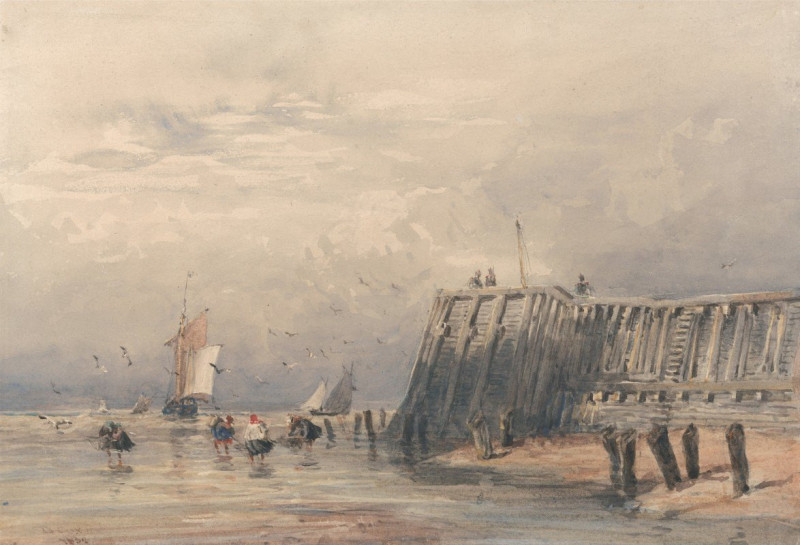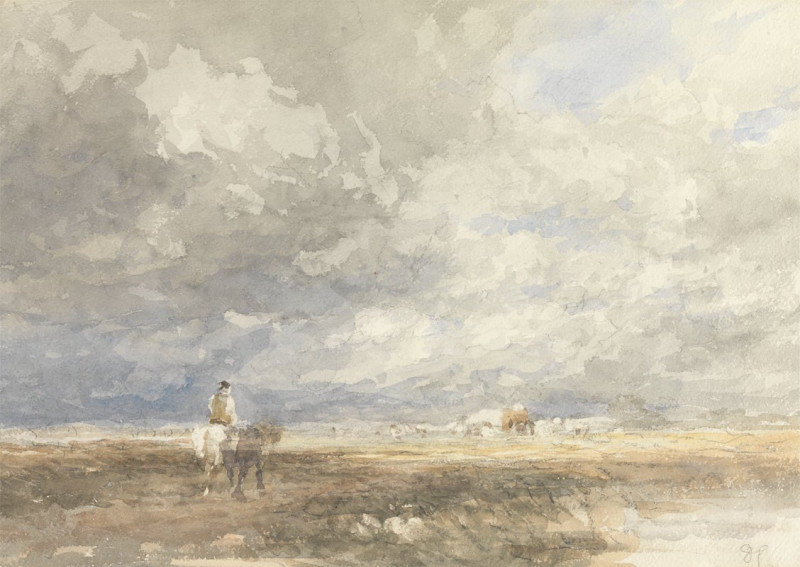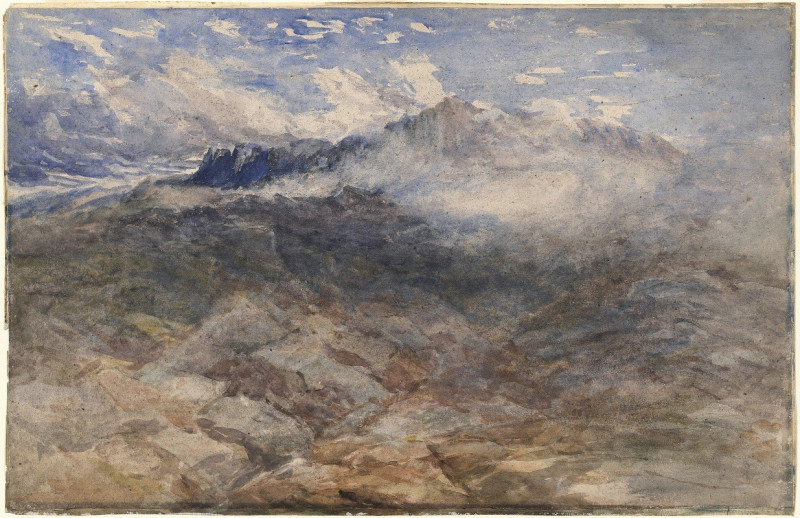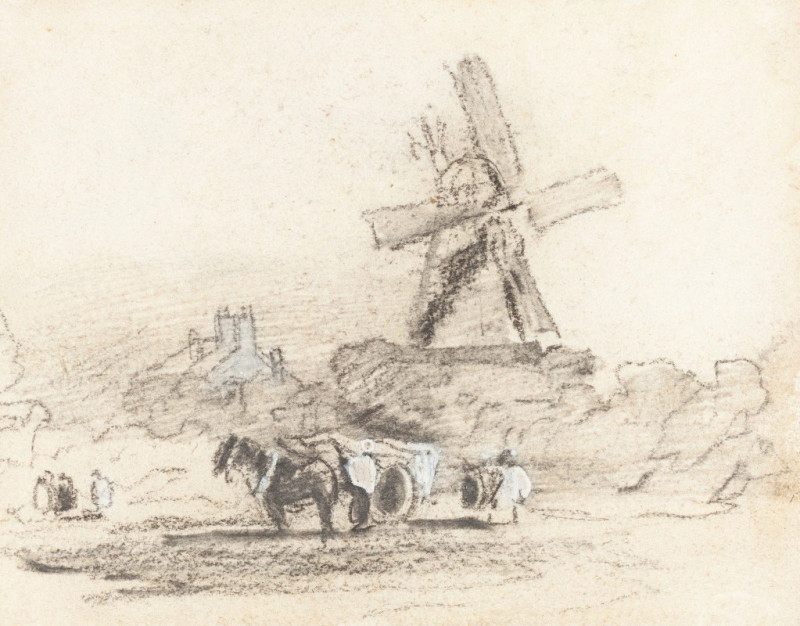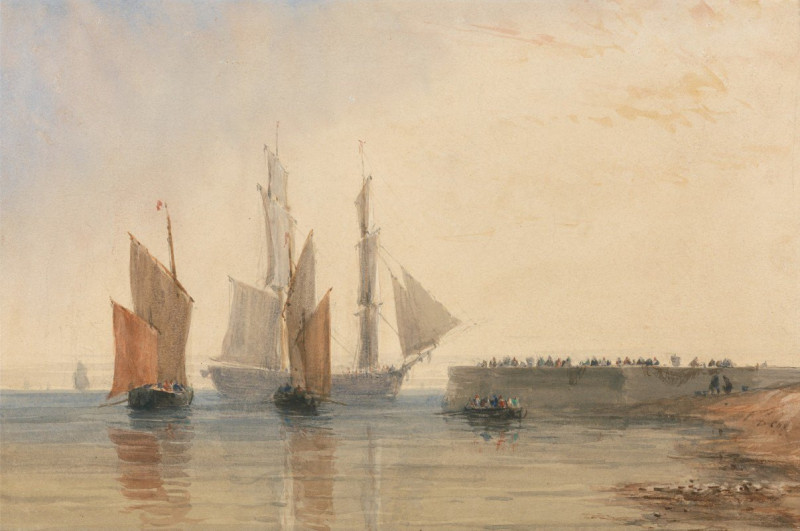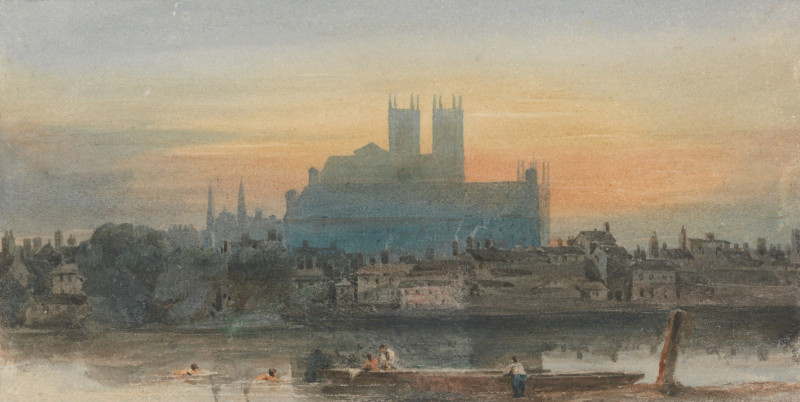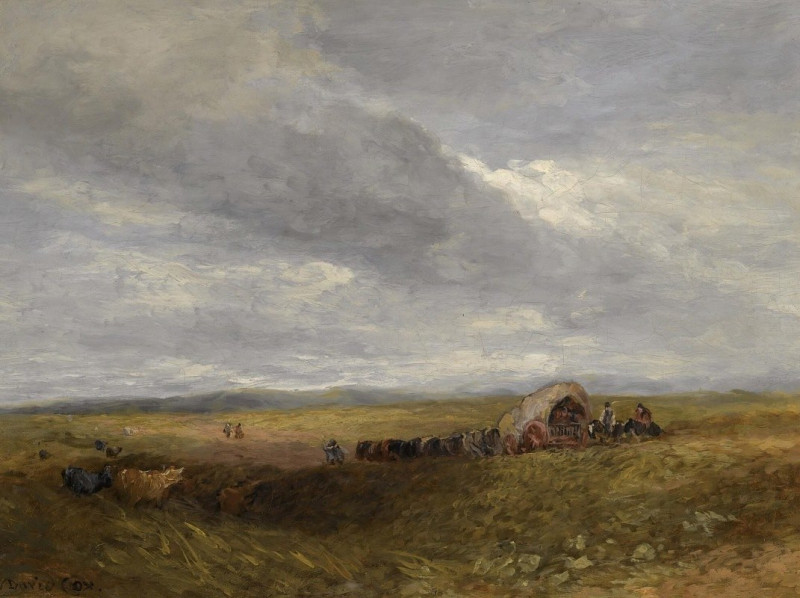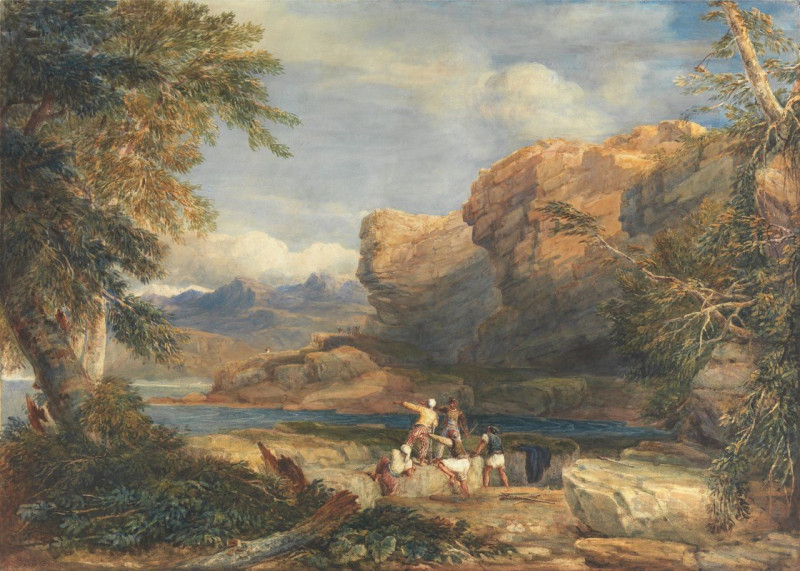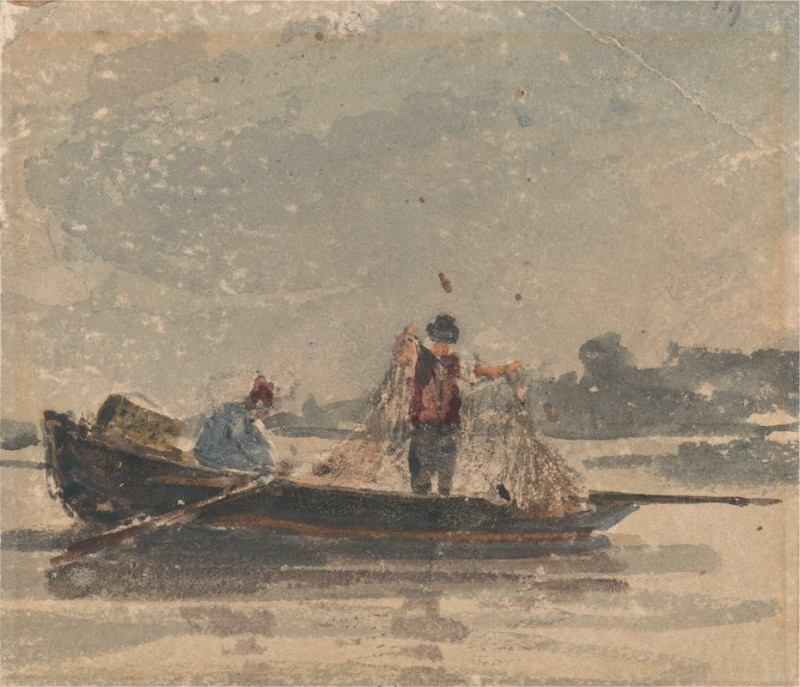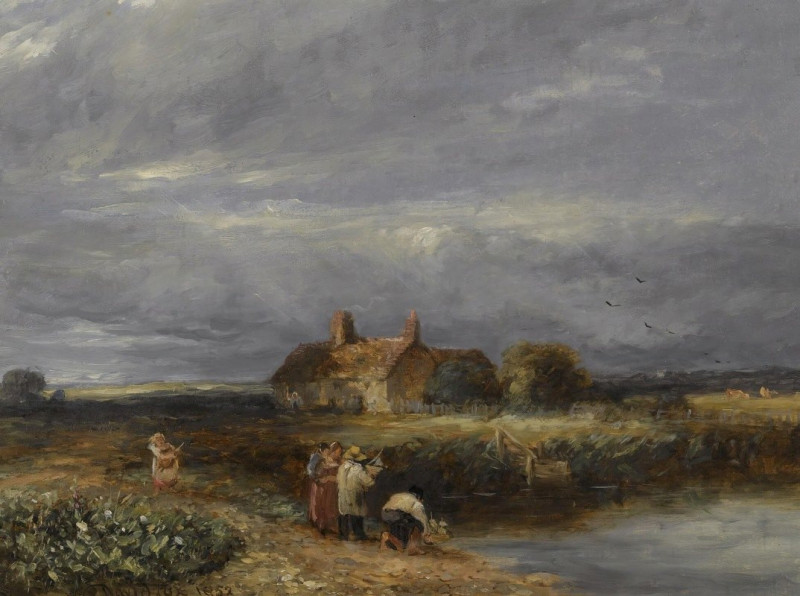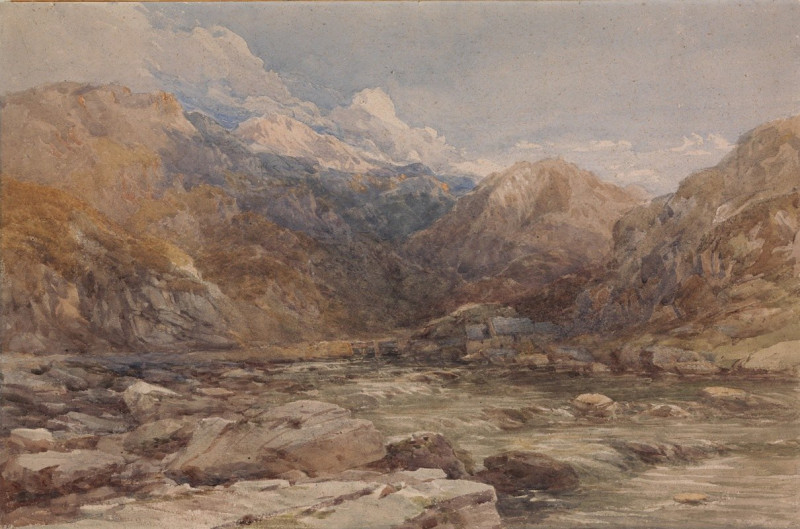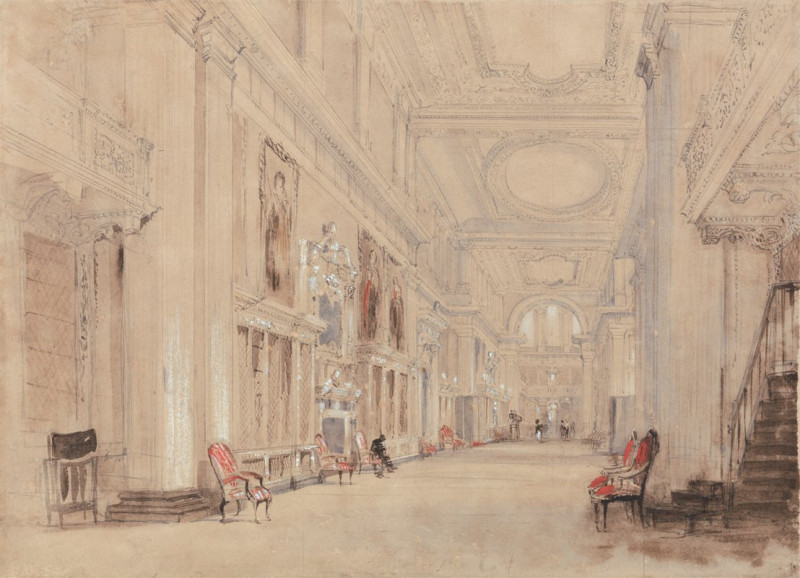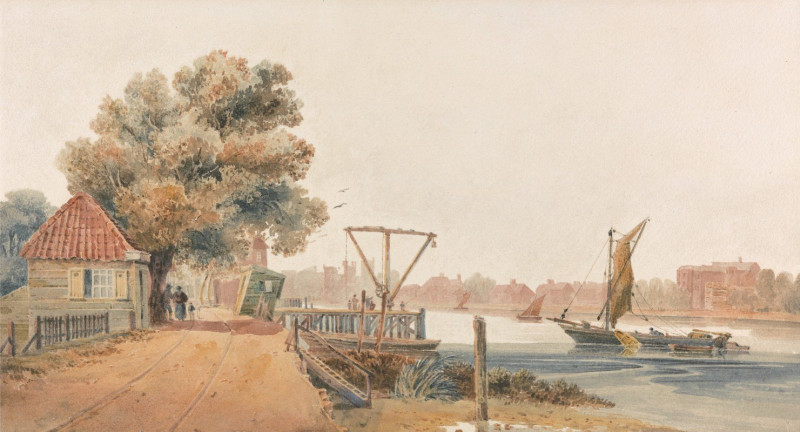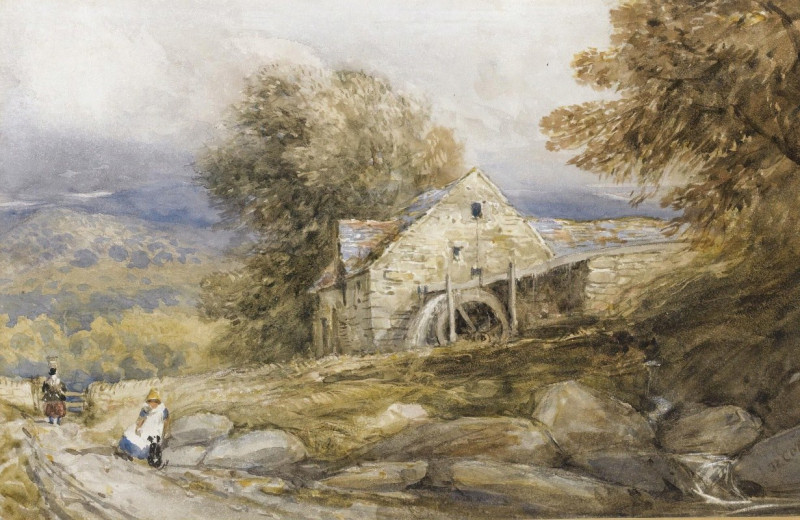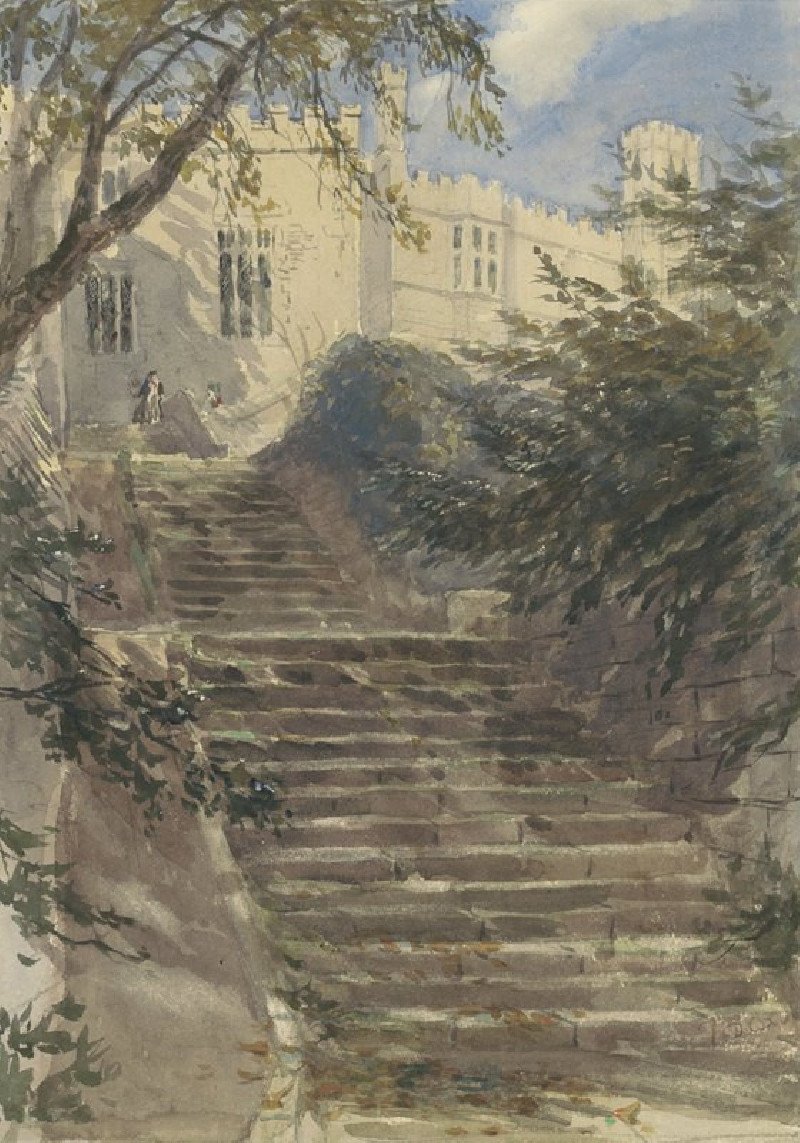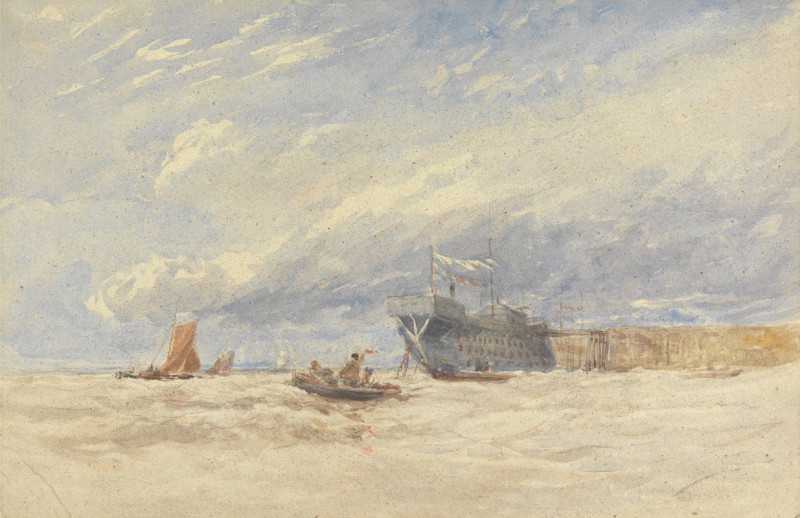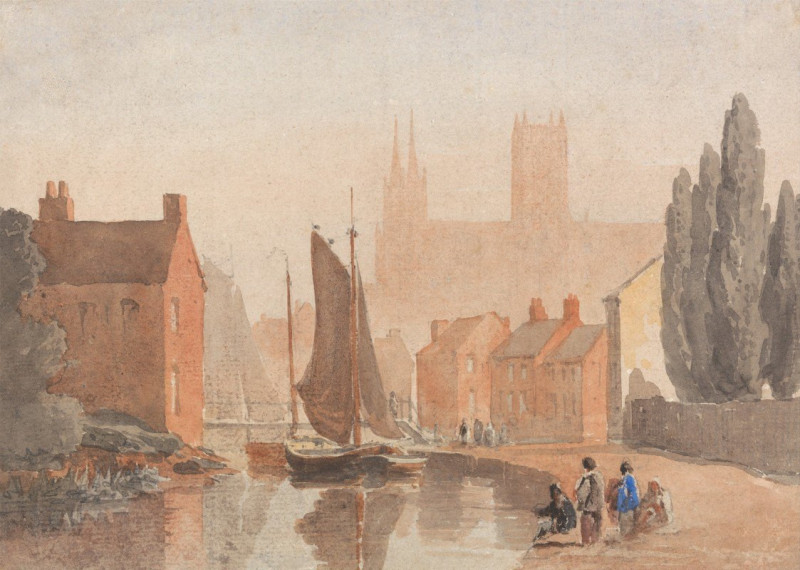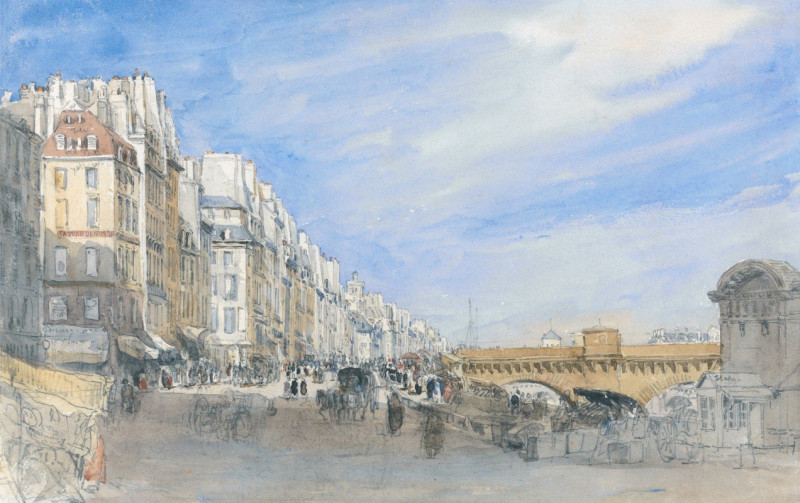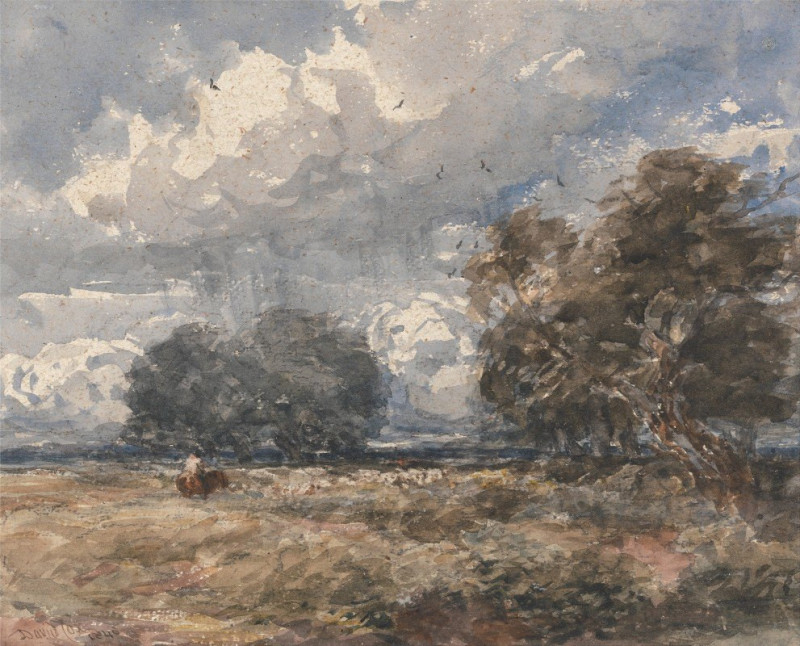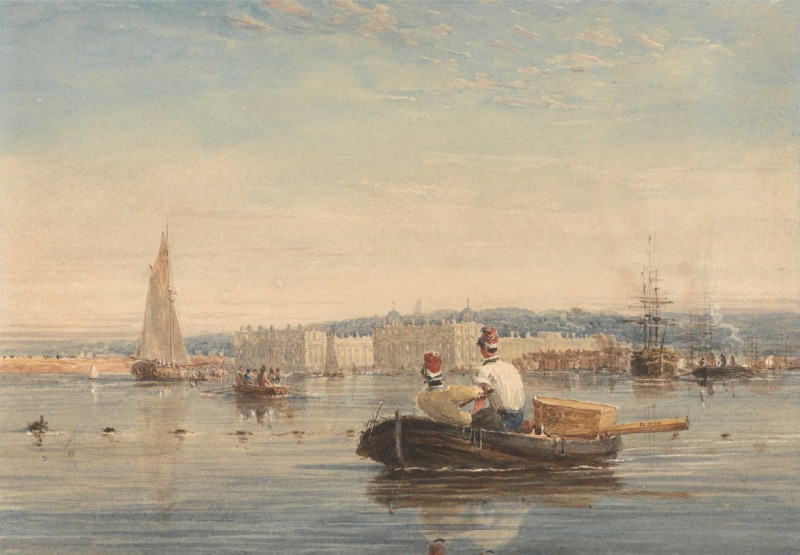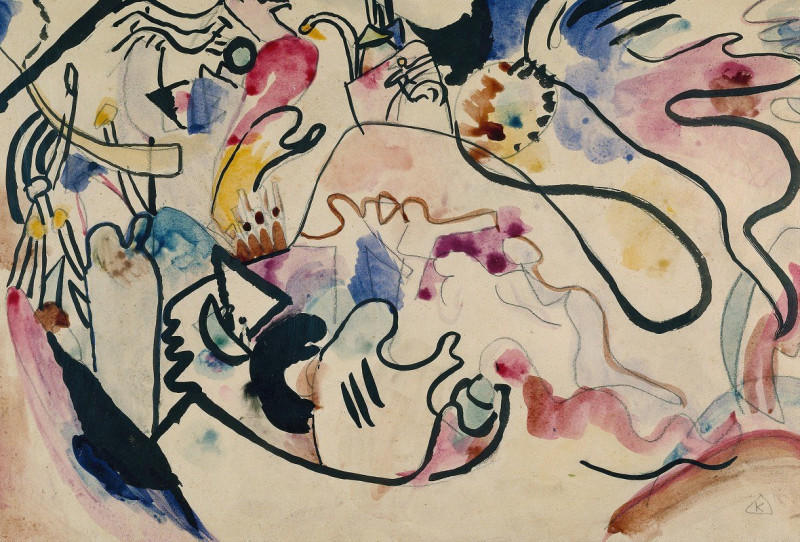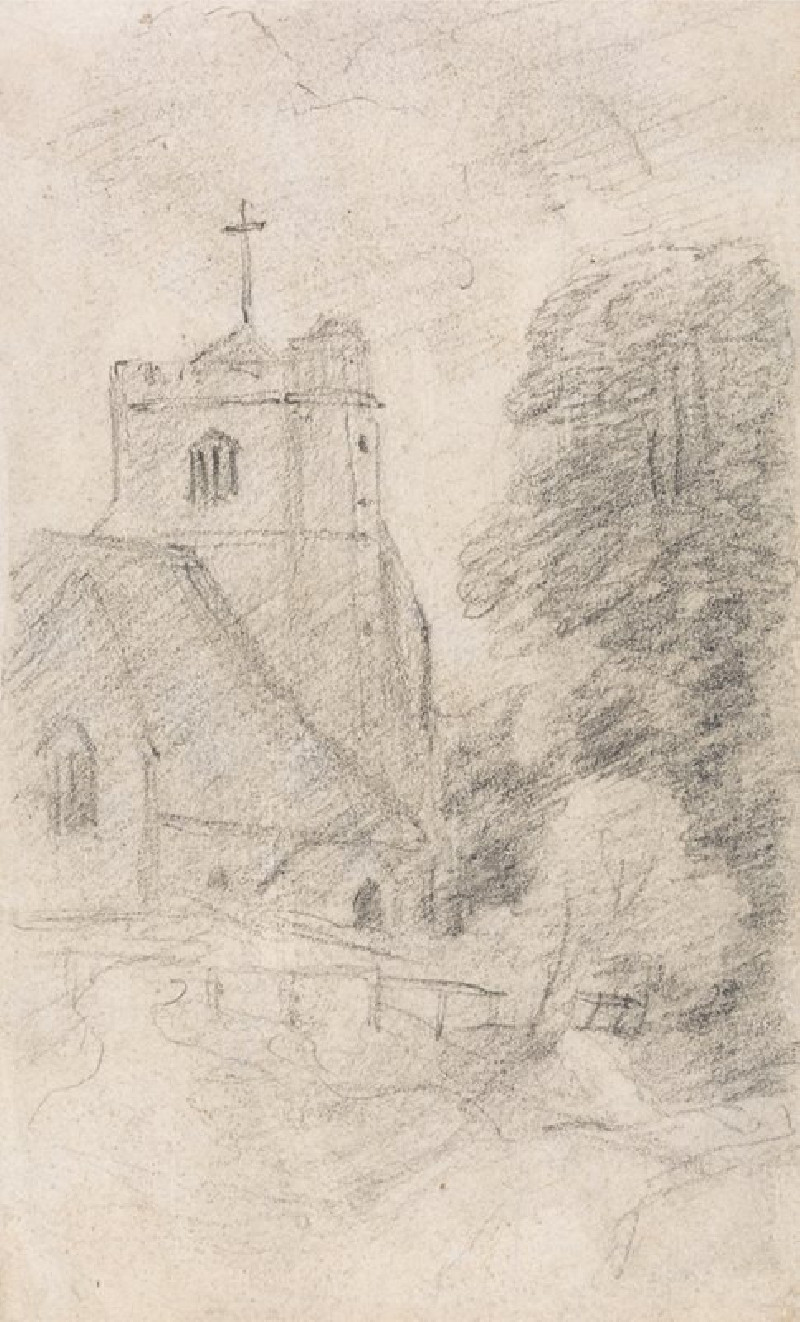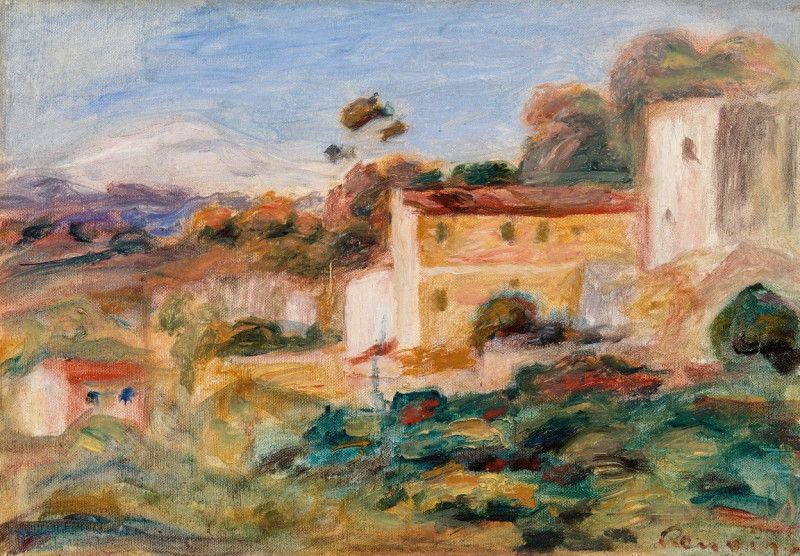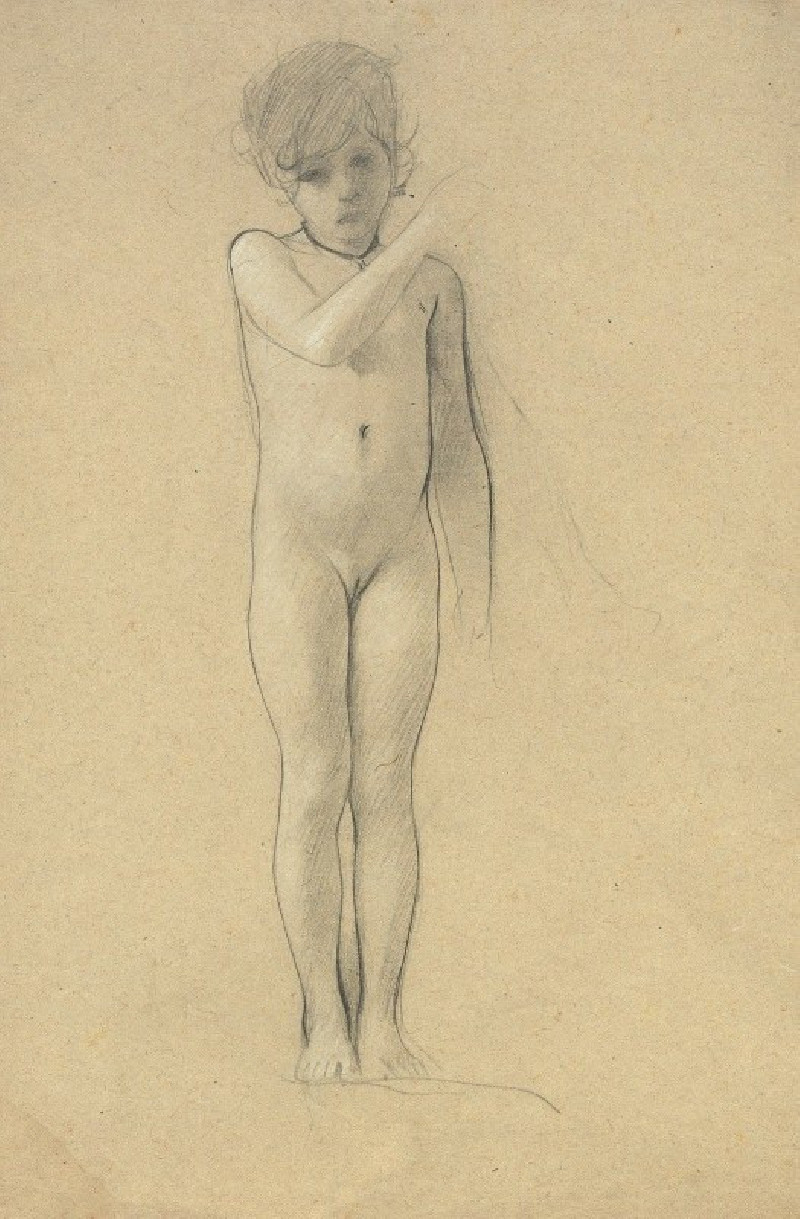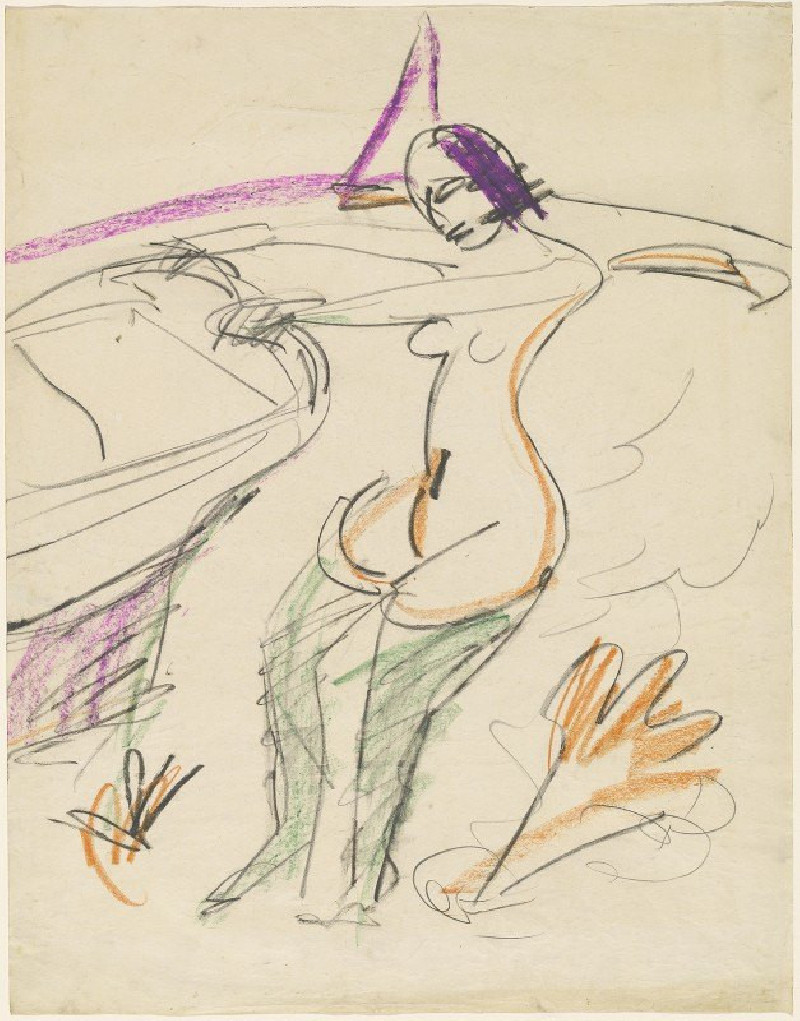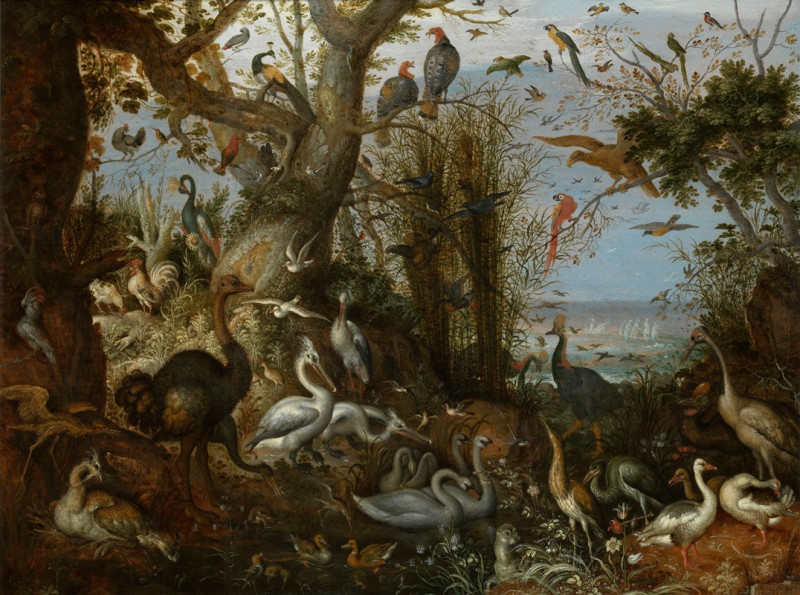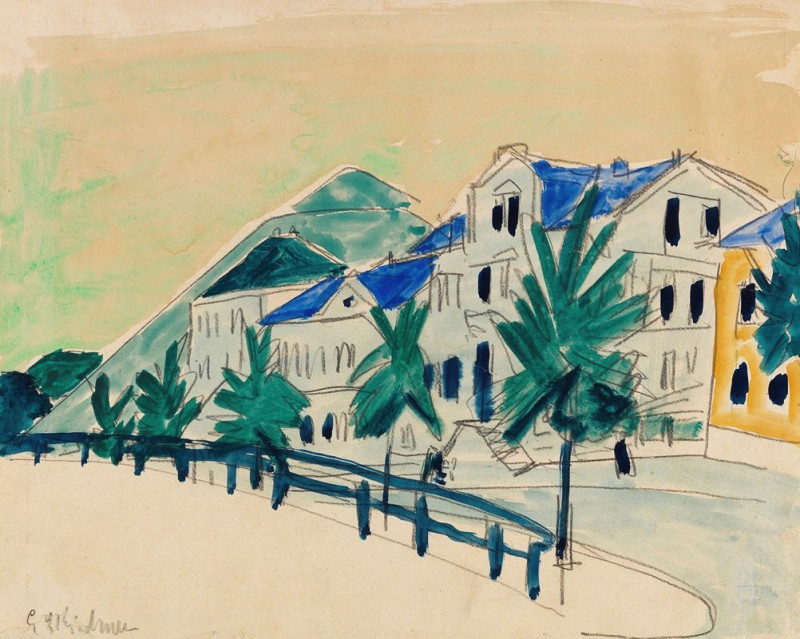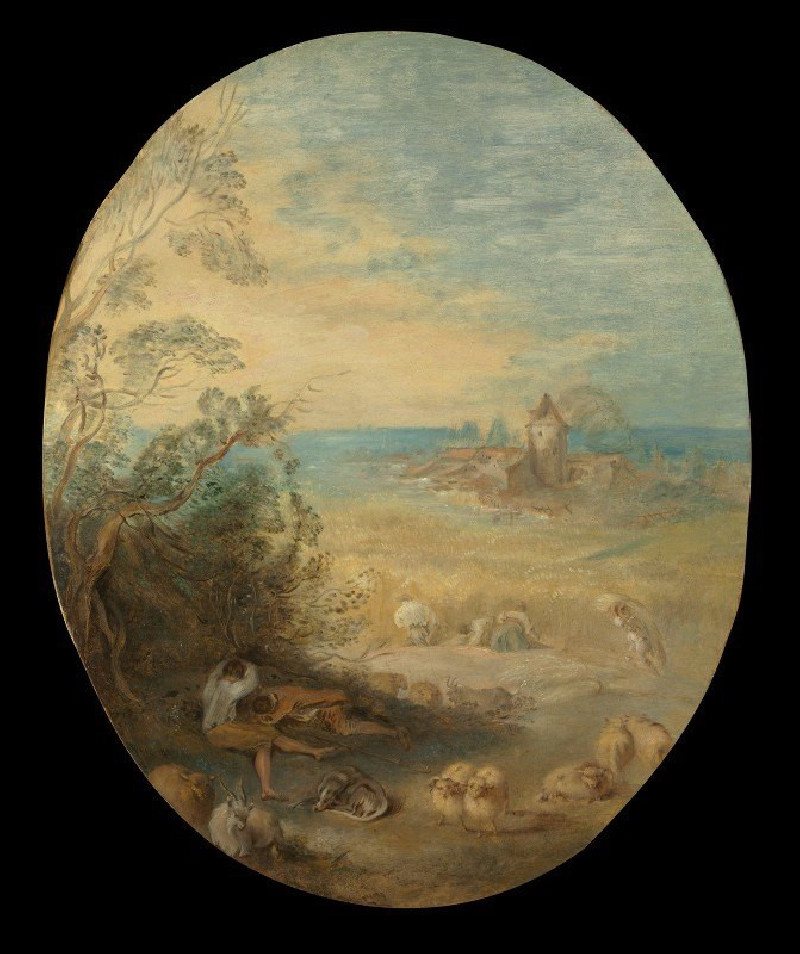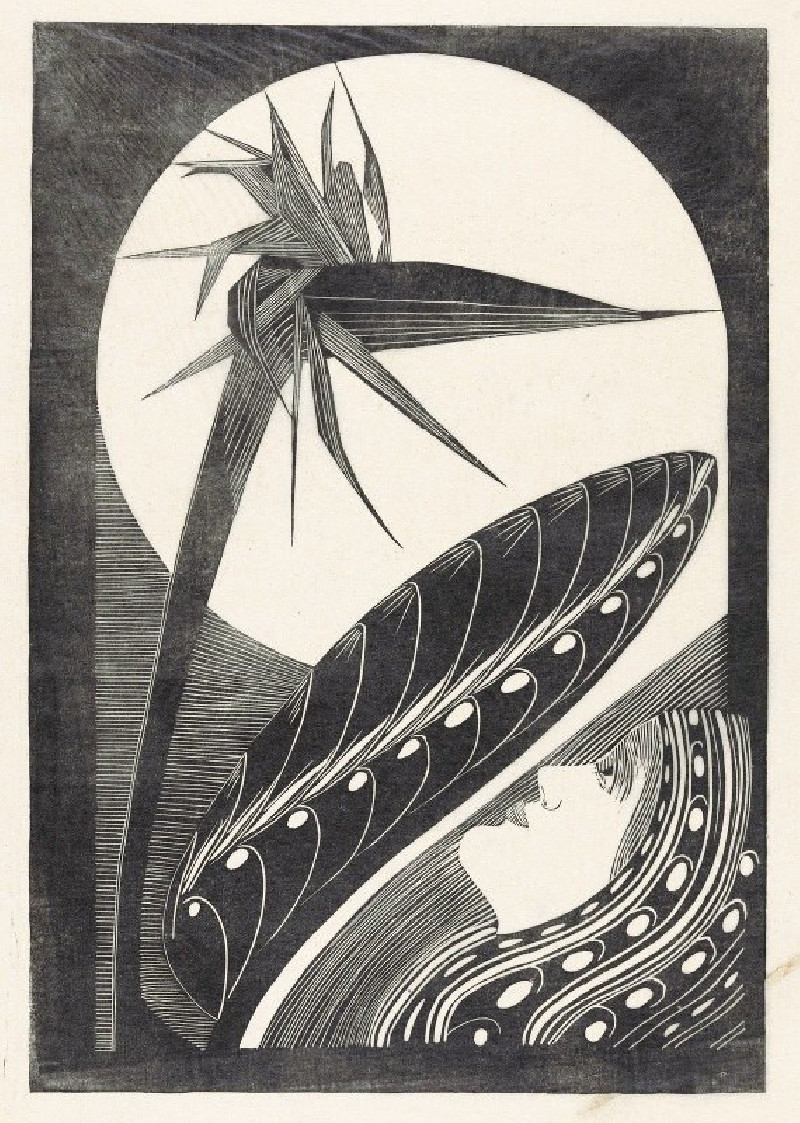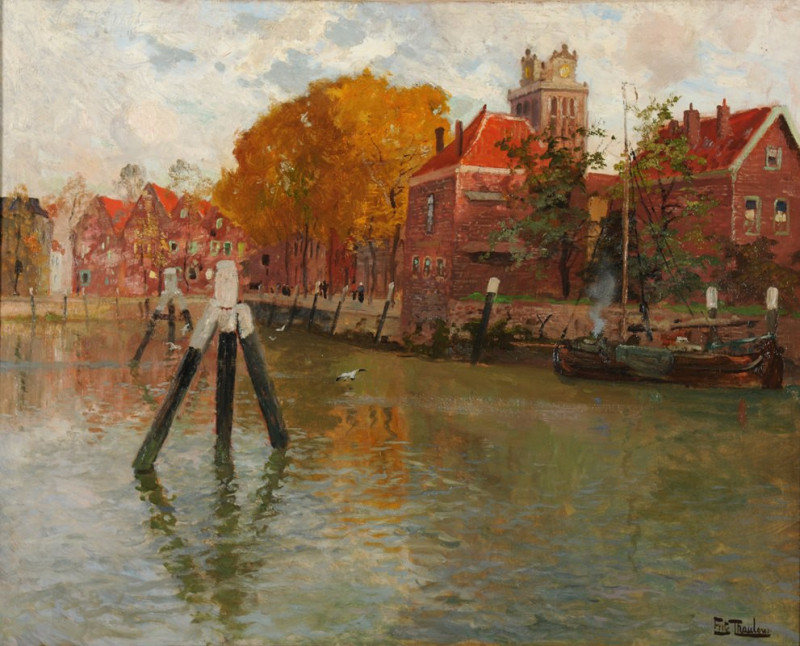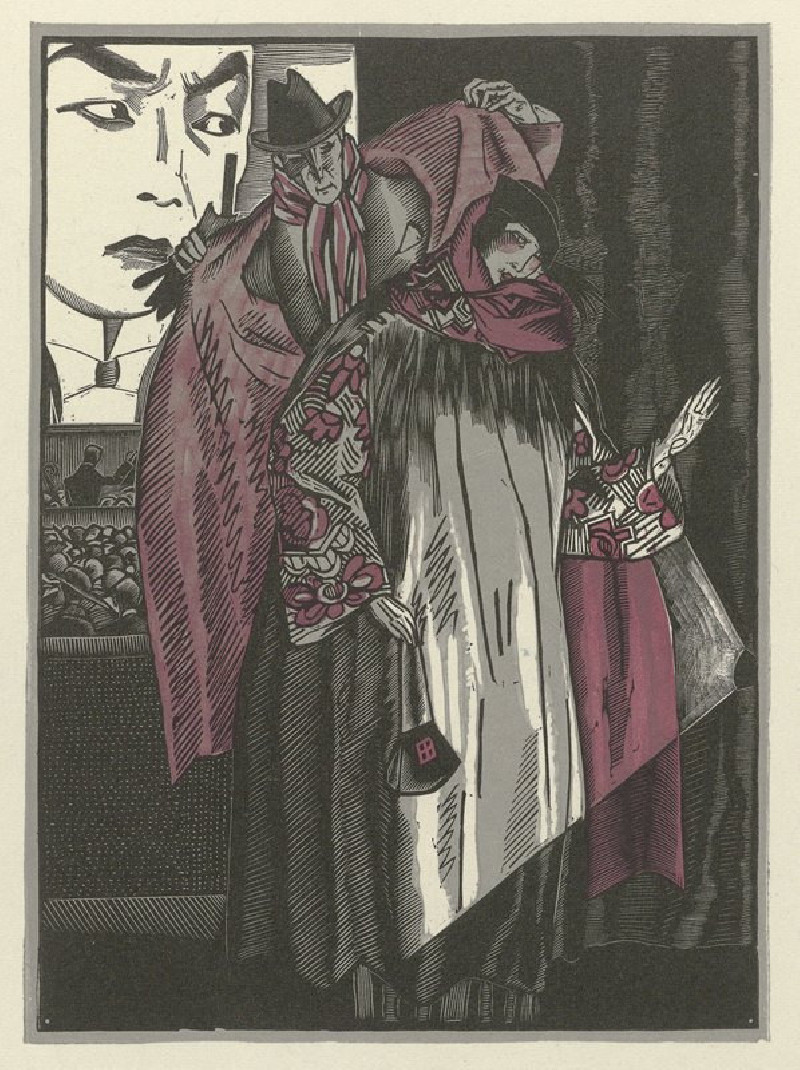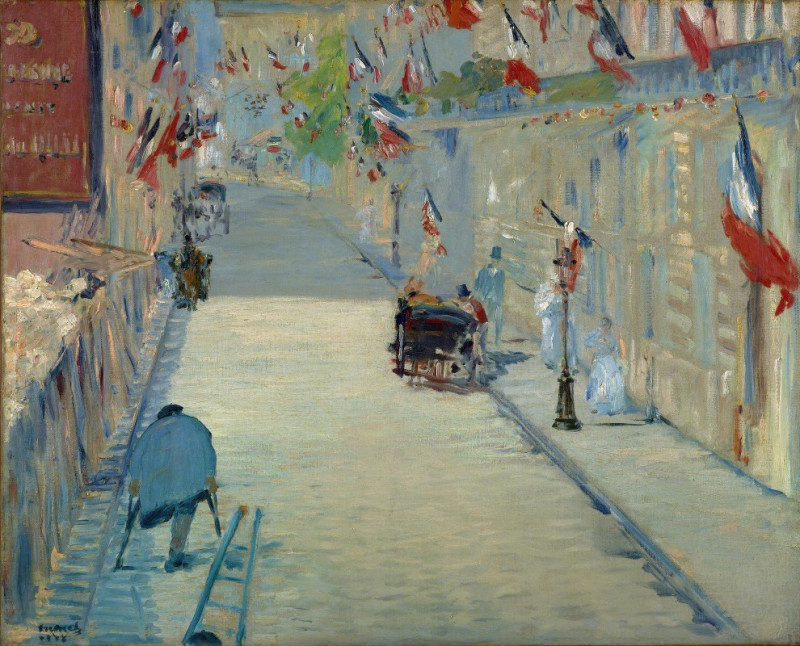Boat Building, Dockyard at Birmingham (1800s)
Technique: Giclée quality print
Recommended by our customers
More about this artwork
Step back into the early 1800s with David Cox's evocative painting "Boat Building, Dockyard at Birmingham." This artwork invites viewers into a serene yet industrious scene at a boatyard, where the craftsmanship and naval history of Birmingham come to life.In the foreground, Cox masterfully captures a moment by the water where figures are engaged in the construction and repair of wooden boats. The meticulous strokes highlight the workers' interaction, adding a dynamic quality to the serene waterfront. Reflections on the water's surface add another layer of depth and texture, enhancing the overall realism of the scene.The background of the painting features a prominent building, possibly a workshop, shrouded in a haze that might suggest early morning or late afternoon light. This soft diffusion creates an ethereal contrast with the more sharply defined figures and objects in the foreground.Adding to the ambiance are the subtle inclusions like the birds in flight, which draw the eye upward and offer a sense of freedom and movement against the relatively still working scene below.David Cox's use of watercolor allows for a blend of soft washes and more detailed accents, creating an atmospheric effect that perfectly captures both the tranquility and the industrious spirit of the dockside. This painting not only reflects a moment in Birmingham’s maritime history but also serves as a testament to Cox’s ability to convey depth, emotion, and narrative through landscape painting.
Delivery
Returns
David Cox (29 April 1783 – 7 June 1859) was an English landscape painter, one of the most important members of the Birmingham School of landscape artists and an early precursor of Impressionism.
He is considered one of the greatest English landscape painters, and a major figure of the Golden age of English watercolour.
Although most popularly known for his works in watercolour, he also painted over 300 works in oil towards the end of his career, now considered "one of the greatest, but least recognised, achievements of any British painter."
His son, known as David Cox the Younger (1809–1885), was also a successful artist.




